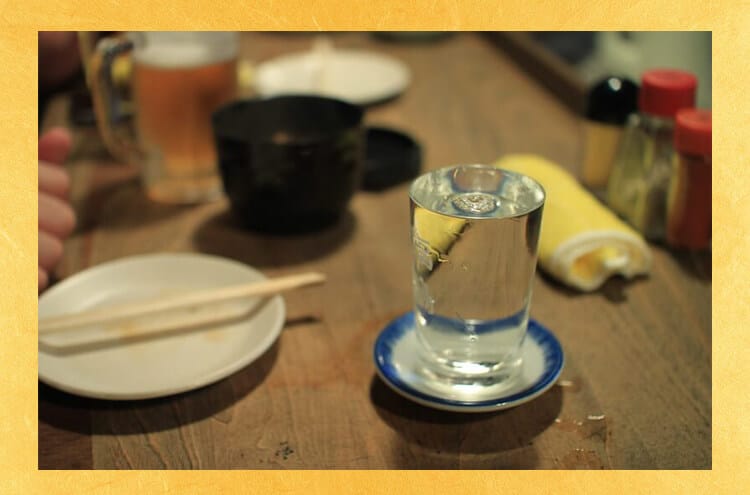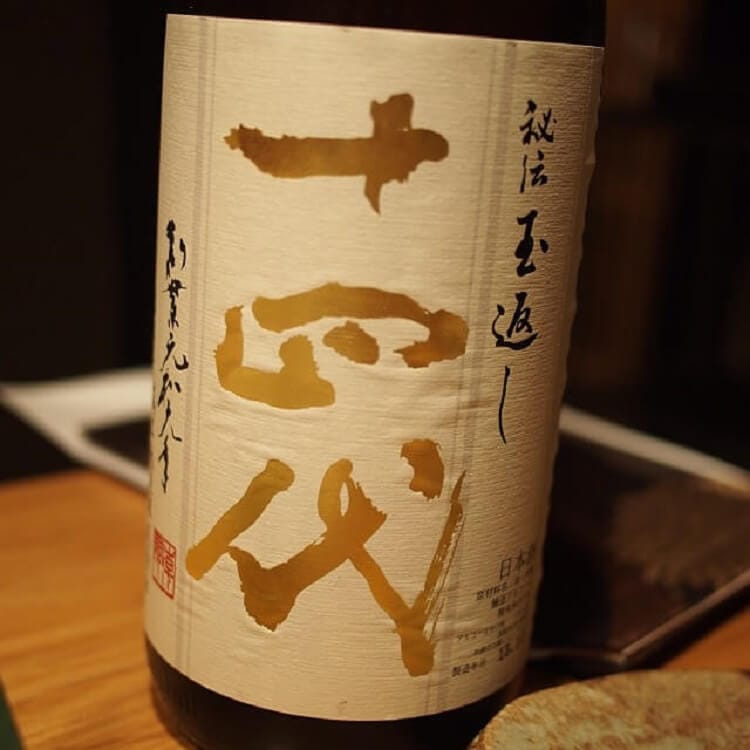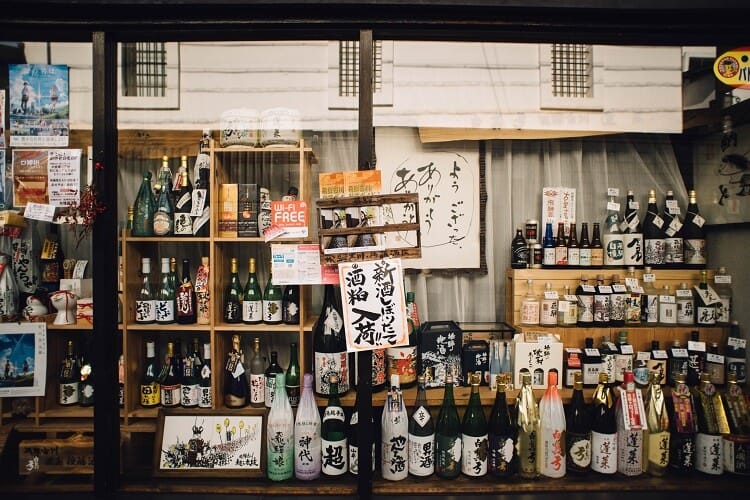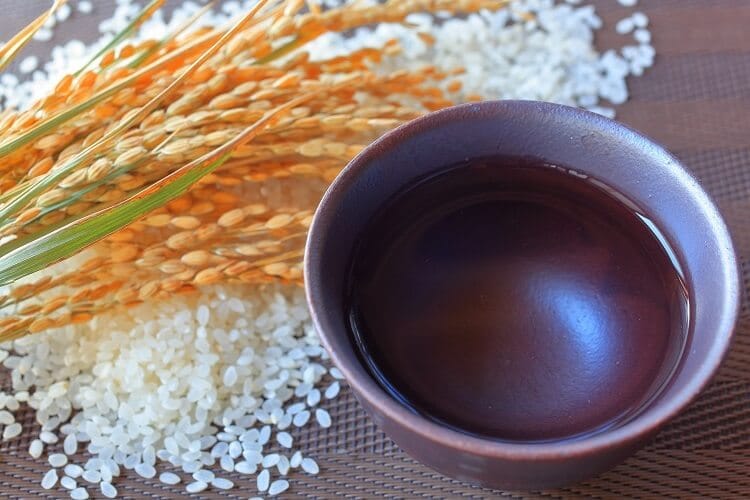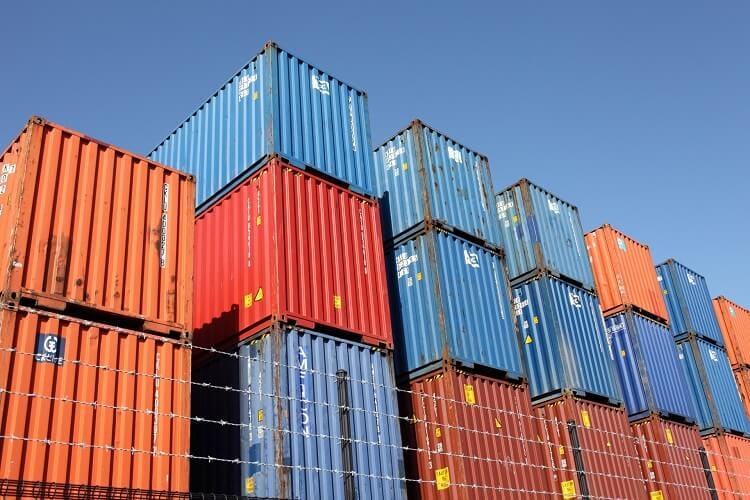
After the peak of the popularity of sake in 1975, sake has been steadily declining for about 45 years. In the meantime, the country, which had not taken any action, finally lifted a heavy waist.
Until now, despite the fact that the current situation that the shrinking of the sake brewery is progressing due to the shrinking market continues to be pointed out,
- Refuses to issue new sake manufacturing licenses
- Closing the door for those who have new passions and ideas for sake brewing
The country has been strictly following this policy. However, the situation suddenly developed here for some reason.
Behind this, the amount of sake exported overseas in 2018 rose to about ¥ 222 billion, despite the shrinking sales volume of sake in the domestic market. It is thought that there has been a record for the past nine years.
The good news is that this fact has been used to the contrary to the popularity of sake, and the distribution of SAKE, which is produced cheaply overseas, is increasing.
If you continue to do so, American, Korean and Chinese sake will be exported to Southeast Asia and Europe and traded at low prices. SAKE made outside of Japan has become popular, and there is no fear that delicious Japanese sake will stop selling.
This article is scheduled to take effect on April 2020, 4,Revision of the Sake Tax Law specializing in sake for exportI will explain the background and whereabouts of.
Reform of the “Sake Tax Law” also pushes the government to make “high-quality sake”
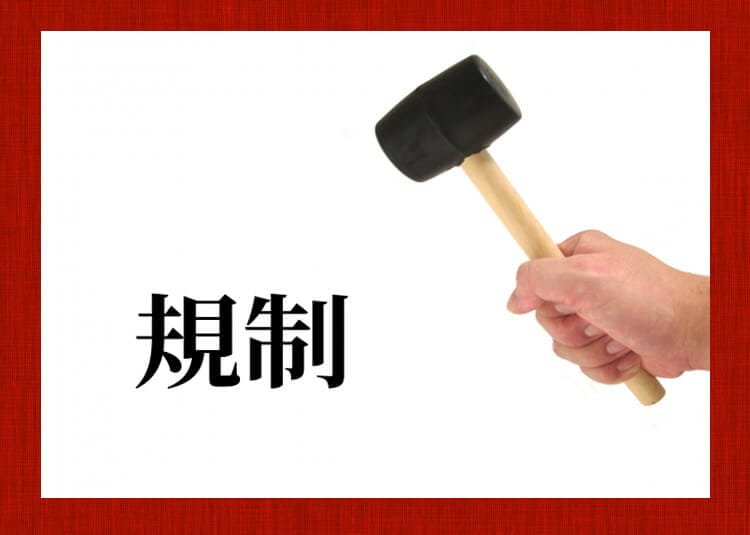
The government has already
- Actively appeal by setting up a sake PR booth at international conferences such as the G20 Summit
- The current Japanese sake tax of 2023 yen (10ml) will be reduced to 42 yen in October 350
In addition to this, the draft amendment to the Sake Tax Law will be a new plan for the issuance of a new Japanese sake production license.
Characteristics of new sake breweries for "high-class sake" according to the "Sake Tax Law"
- OverseasBeing a sake brewery specializing in
- Since the application of the minimum production quantity standard "XNUMX liters per year" is excludedSmall businesses enterPossible
- High value-added sakeKeep building
Background to granting permission only for "luxury sake" for overseas in the revised "Sake Tax Law"
The sales (consumption) volume of sake, which was 1975 million tons in 176, dropped to 9 tons in 2015, a drastically reduced to one-third of its peak in 588 years.
You all know the cause.
Falling sake popularity
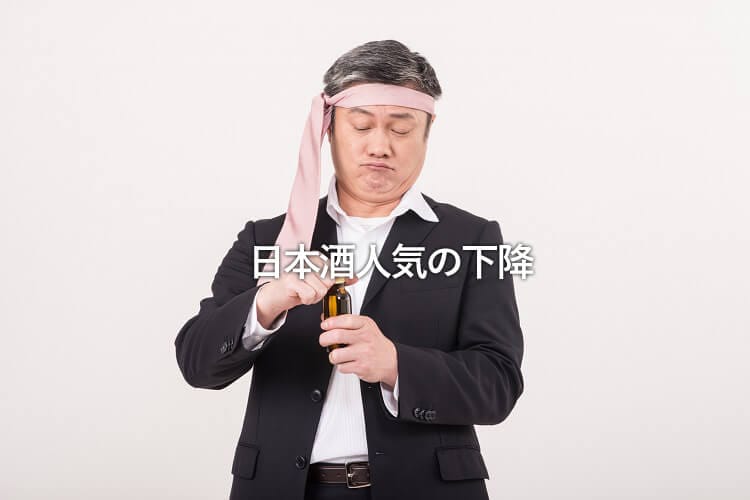
One of the reasons is that the consumption of alcohol by all Japanese people has decreased, but the reasons why young people have left sake, especially, are as follows.
- Experienced sickness in deteriorated sake service
- There is an impression of uncle's sake, sake for getting drunk
- Fat, unhealthy, smelling image
- Too many types to get confused
- I just drink, but I don't understand the need to understand technical terms
- Some people drool when drinking
- I don't want to get drunk originally

However, from a macro perspective, the following causes can be considered.
- From around 1975, Japan's high-growth period has come to an end, and the amount of drinks and gifts received as entertainment decreases.
- Aging of Japanese sake consumers who have supported ordinary sake
- Diversification of consumer preference for drinking
- Young heavy usersSwitch to Shochu■
- Once a guest of sakeUpper class turned to advanced wine
- Middle and lower class are also stylishConsuming low-priced imported wine
- Alcohol consumption by households has fallen for four consecutive years, meaning that consumers are moving away from alcohol (down 4% YoY to ¥ 4.1 [FY34,430])
As a result, the outlook for liquor consumption expenditure in 2025 is a dark prediction that "it will continue to decrease."
* The shochu boom ended in 2008, and sales have since declined.
There are few sake breweries that make "luxury sake"
View this post on Instagram
The number of sake brewers actually brewing sake is 2017 in 1,254■(Source: Imperial Data Bank)Specific name liquor* *58.1% of non-Japanese sake (normal sake) brewedAccount.
In other words, regular sake at a relatively low price is the main product at each sake brewery, but the core users of sake are the elderly. It is unlikely that domestic liquor consumption will increase with their aging.
* Why does the number of sake breweries continue to decrease? It is not only because of the decrease in shipment volume,Sake brewing with no successorIs hard work and cannot secure human resources.This is because the number of sake breweries that are close to closure is increasing.
** Specific name sake refers to Ginjo sake (Junmai Daiginjo, Junmai Ginjo, Daiginjo, Ginjo), Junmai sake, and Honjozo.
A sake brewery that focuses on local sake rather than "luxury sake"
Recently, it has been said that “special-name sake sales are strong (the first negative growth in recent years)”, but small and medium-sized breweries, which account for 99% of sake breweries, continue to make local customers. "Sake that is relatively inexpensive, but matches local produce and is enjoyed by drinking locally■It is.
* Some sake is made using 100% Yamada Nishiki, the king of sake rice, even though it is ranked as ordinary sake.
Even if the government wants to increase the amount of sake exports further, it cannot afford to make sake even if it encourages overseas, that is, high-quality sake that is particular about the production method and ingredients, as well as "make and increase".
There are other reasons why small and medium-sized sake breweries are not able to cope with "making excellent sake and exporting overseas", which is supported by the national government.
A small sake brewery that resists overseas trade even if you make “luxury sake”

In order to export sake, you must first create a huge number of detailed reports in local languages, including additives, ingredients, and containers, and submit them to the partner country.
Even if you manage to get there, it's hard to get them to a local restaurant.
Currently, sake breweries that have been successfully exported overseasI was worried about the decline in domestic demand quickly and had been looking abroad for a long timeHas a history.
Because of such a foresight, we have been working for many years, such as searching for a sales partner in a foreign country or asking a restaurant to leave it, and now we have achieved business results with many countries. .
On the other hand, while the local sake brewing has been stuck until now, the increase in the amount of sake export has finally become evident every year. New breweries that are not major may not be accepted.
Also, even if you leave it, there are few restaurants that know the appropriate storage method■.
* It is a famous story that the chairman of Asahi Shuzo, who drank his own sake, frowned at a restaurant in Paris where "Dassai" is located.
Unlike wine, sake that does not use preservatives has the risk that if it is not drunk within one year from the date of manufacture, the taste will change and the value will be lost. Brands with high brand names turn quickly, but brands with no name, "Putto", do not sell and their quality deteriorates. A complaint arises from a customer who drank the sake without knowing it.
Thinking about this, I guess it will be like "I'm going to continue to do local small-scale production as before, I do not need to make a profit. Let's make local sake so as not to crush the brewery on my own" .
Problems with the hardware, resources, and technical skills of "luxury sake"
If the size of the sake brewery is small, it is difficult to produce sake that can be sold overseas. Currently, the most popular overseas are Junmai Daiginjo and Ginjo Sake.
In order to make Ginjo-type sake, it is necessary to remove only the cause of the unpleasant taste on the outside of the rice to only starch quality■. In other words, sake rice that is originally large in grain (brewed rice suitable for sake brewing) is required.
* Some sake has won awards for high-quality sake that does not dare to polish the rice and makes use of the original taste of rice.
However, in general, sake rice with a large rice grain size is
- Difficult to cultivate due to many adverse effects such as easy fall of rice
- Training takes time
- Low yield per unit area
- The selling price can be about three times the price of edible rice
For example, it is traded at a higher price than ordinary rice. In addition, making high quality sake requires polishing rice, and the cost of long rice polishing (50% polishing time is estimated at 50 hours) is not cheap.
Even if you clear it and manage to produce high quality sake,
- Little information on the launch of local subsidiaries
- Unable to gather reliable local members
- I do not know the technology to stop the deterioration of sake quality during transportation
- I have to get an export license
There are many problems that need to be resolved from human resources to cash flow.
Micro-sake breweries also know the promise of overseas markets, but at the moment they are reluctant to export. Nevertheless, in the future, overseas exports should be considered.
However, at that time,Sake breweries specialized in exports are exporting overseas due to this revision of the liquor tax law, so there is no room for micro breweries to enter, and we will fall behind the wave of internationalization and weakenI'm worried that if I fall into such a situation, I hope that it is just unnecessary.
How to Make Sake World Sake: Penetration to Every Family
View this post on Instagram
Nevertheless, it is clear that the current amount of sake exports is not enough to make sake into a world-class everyday sake.
Despite the increase in exports, sake is still worth 1 billion yen (222) compared to 2018 trillion yen of wine exported annually.In order to become a "sake loved all over the world" like wine, it is necessary to export more sake.
Currently, Japanese restaurants are driving the Japanese sake boom overseas. Customers prefer Japanese sake at restaurants as “healthy sake that goes well with healthy Japanese food,” but wine at each home is wine.
Japanese restaurants are becoming saturated soon, and exports of sake cannot be expected to grow so far after 2020Some people expect it.
Expand the base of sake before the export of sake goes down, and make it a daily liquor like wine. That is the mission given to sake "globalization■".
* Globalization: A coined word that mashes up globalization (global universalization) and localization (localization). The word, combining the contradictory meanings of being global but having locality, was first proposed by a Japanese economist. The purpose of globalization is "to make things universal and special: to create products that are international but also local." Globalized products, even in a variety of different cultures and environments, are said to result in significant benefits for companies if they are adapted to the region.
What is needed for the globalization of sake
The first step in globalization is to increase the distribution of sake around the world.
It is not a special drinking only in a Japanese restaurant,
- If you go to a supermarket, you can always buy various kinds of sake because they are on the shelf
- Available via mail order
- Sake subscription services have also increased ...
As a result, Japanese sake overflows all over the world, and if it becomes unusual sake, overseas demand will increase.
Click here for Sake Subscription Situation in the United States ↓
In fact, one of the roles isSake made overseasSuch you.
Learn about sake with "luxury sake" made with rice from that country
View this post on Instagram
Local people who reject "SAKE" who came from a foreign country because they usually drink their own wine. But,If you ask for local sake made from rice in the land, even the stubborn will drink smoothlyThing.
First of all, locals began to drink curiously about "exotic sake and locally made sake," and discovered that sake was delicious. And the habit of drinking local sake on a daily basis is established.
Eventually"Made in Japan" brandDrink and discover the true charm of sake and get hooked. If this composition succeeds, stable demand for sake can be expected in the future.
Skilled overseas sake brewery to spread the appeal of "luxury sake"
View this post on Instagram
In the United States, Canada, the United Kingdom, France, Spain, Australia ... the number of overseas sake breweries that make sake has increased.If sake is made in the local area, it will be easier for local sake to be accepted locally and will naturally blend into people's livesIt is expected.
If the number of restaurants that put sake in France and Paris, a gastronomy country, increases, rumors that `` that three-star restaurant has also added sake to the list '' flow, and local restaurants also start putting sake, and local people also It is expected that you will get used to sake.
In this way, sake is gradually becoming not a “sake to be eaten in urban restaurants,” but it is also a healthy everyday sake in rural areas, and exports may further expand.
France: French "WAKAZE" Rice, water, yeast, and fine French sake
View this post on Instagram
Some groups have already decided to brew sake abroad when the government prevented new brewers from entering the brewery under the law "No sake is allowed except for existing sake breweries."
That is the venture company WAKAZE, which has an office in Yamagata Prefecture.
Unlicensed WAKAZE is OEM-produced■In-house production of high-grade Japanese sake "ORBIA" and "Fonia", a botanical sake "other brewed sake" under the Sake Tax Law, to develop a new era of SAKE and distribute it worldwide Has been well received.
* OEM production refers to "contract brewing" in which brewing is outsourced to another brewery.
And this time, the micro brewery “Kura Grand Paris”, which was longing for Fresnes near Paris, was completed. Sake brewing with overseas markets as the main target will be further spurred. The characteristics of sake born at Kura Grand Paris are:Use not only local water but also rice from Camargue in southern FranceThings you are doing.
The yeast does not use sake yeast,Use of yeast for wine.
Although it is a thorough local sake brewing that sticks to terroir, in order to complete liquor with more variety characteristics,Aging barrels are not limited to wine barrels, but also use different types such as Shelley barrels, Van Jones barrels, and Calvathos barrels.The plan. When this happens,The range of dishes to match with sake is also expandingRight.
WAKAZE's sake is made in a novel way, pairing with Western foods in mind, so it is easily accepted by the local market and has the potential to become a daily sake in France I am.
In fact, "Salon du sake" was held in Paris in October.■WAKAZE also exhibited a test brew of Camargue rice, but the booth attracted a lot of attention and the people's reaction was strong.
* Salon du sake is an event to make more people know about sake. In the sixth year, 6, 2019 kinds of sake are exhibited, and the number of visitors is 600, increasing year by year. Held every year, we are exploring new harmony between traditional Japanese flavors and ingredients and dishes.
France: Rh ヌ ne-Alpes “Sho-Naiku Sake Brewery” Luxury sake brewery exported to Japan
View this post on Instagram
The European market where the sake industry wants to further develop the demand for sake.
There are many sake breweries in Europe that make sake, but a country of gastronomy and wineFull-fledged sake brewery "Sho-Taiza Shuzo", born in France, also exports sake to JapanSkilled enough to do.
Five brands of Shonai Sake Brewery that use natural water from the Alps and use them for water are also on-listed at 5-star restaurants in France. It is said that the Emperor also drank sake from Shonai Shuzo when he visited a Japanese restaurant in France.
Sake made with the natural water of Rh ヌ ne-Alpes is a dry taste that gives you a solid taste of rice. It is also known that it is delicious to have it warm at 60 ℃ or more.
Aichi: "Mannenjozo" is a long-established brewery that starts with rice in France.
Manjo Brewery is not an overseas brewery. However, it is a rare sake brewery that is involved in rice production in Camargue, France, while being registered in Japan.
Mannjo Brewery, which is famous around the world under the brewer Kuheiji brand, has a wine cellar in the Burgundy region,Europeans stick to terroirI know that.
When I jump into a restaurant for sake sales, I always ask, "How do you make the rice used in that sake?"
Wine is a very obvious question for France, who starts with making grapes.
Contrary to France, in the world of sake, where rice for sake is often purchased from outside instead of making it yourself, it is often difficult to respond.
So, in order to sell sake to France, he started making rice in France, saying that it had to be made from French rice.
As a result, the finished sake is "Brewer Kuheiji CAMARGUE."
The taste is "It has a different aroma from sake made from Japanese rice. It feels salty in the soil on the aftertaste. It is easy to drink for Europeans."
Introducing three sake breweries aiming to spread Japanese sake as world sake in Europe, but with their steady efforts, they will be able to blend into the lifestyles of local people and expect the further leap of sake in the future .
Conclusion: Whereabouts of sake after the revision of the Sake Tax Law

Beer was revised under the Liquor Tax Law in April 1994, and the previous rule that "production and sale is limited to 4 kiloliters or less per year" has been removed and reduced to 2000 kiloliters.
As a result, the “first beer boom” began, but the history of disappointment was that the price declined due to quality issues despite its high price. However, from around 1, a new craft beer boom has begun, and a new era of beer has begun.
So what happens with sake after the revision of the Sake Tax Law?
The government says that the impact on existing sake breweries, mainly domestic sales, will be minimized, but as mentioned above, micro-sake breweries are left out of overseas exports, and management will continue due to a further decrease in domestic sake sales volume Deterioration is also possible. This is effectively abandoned.
Not only that, but the entry of major food companies with strong financial resources is given top priority, and mass production of sake for overseas may be committed, and the territory of a medium-sized sake brewery that has worked hard abroad until now may be committed.
It is still a new fact that small and medium-sized breweries have been crushed and fragile since 1994 by excluding the quantity standard.
Of course, many players are needed to revitalize the market, but there is no denying that the quality of sake can be reduced and suicide, as microbrewery has caused in the past.
In order to turn sake into a world sake that can be integrated into a part of daily life, it is necessary to make sake that is more quality-focused than ever.
Otherwise, would I just be worried that the overseas sake brewery, which has improved my skills, would get the stock of "Kokushu Sake"?
Reference materials
・ National Tax AgencySake production status, etc. for 29 brewing year'
・ Imperial Data BankSake maker management survey'
・ Sankei ShimbunSake brewing allowed to enter new market Specialization for exports Government to amend liquor tax law'
・ Fumiki IdeAggregation of Japanese sake breweries, expansion of sales channels, overseas expansionRitsumeikan International Research Institute
・ GD FreakAlcoholic household consumption expenditure'
・ T, The New York Times Style MagazineLe Sake Made in France'
・ National Tax AgencyPromotion of Japanese liquors at SALON DU SAKE 2019'
・ The 77th National Convention of the Japan International Economic AssociationAccumulation of Japanese sake breweries and overseas development-Case studies of Hida and Shinshu'


